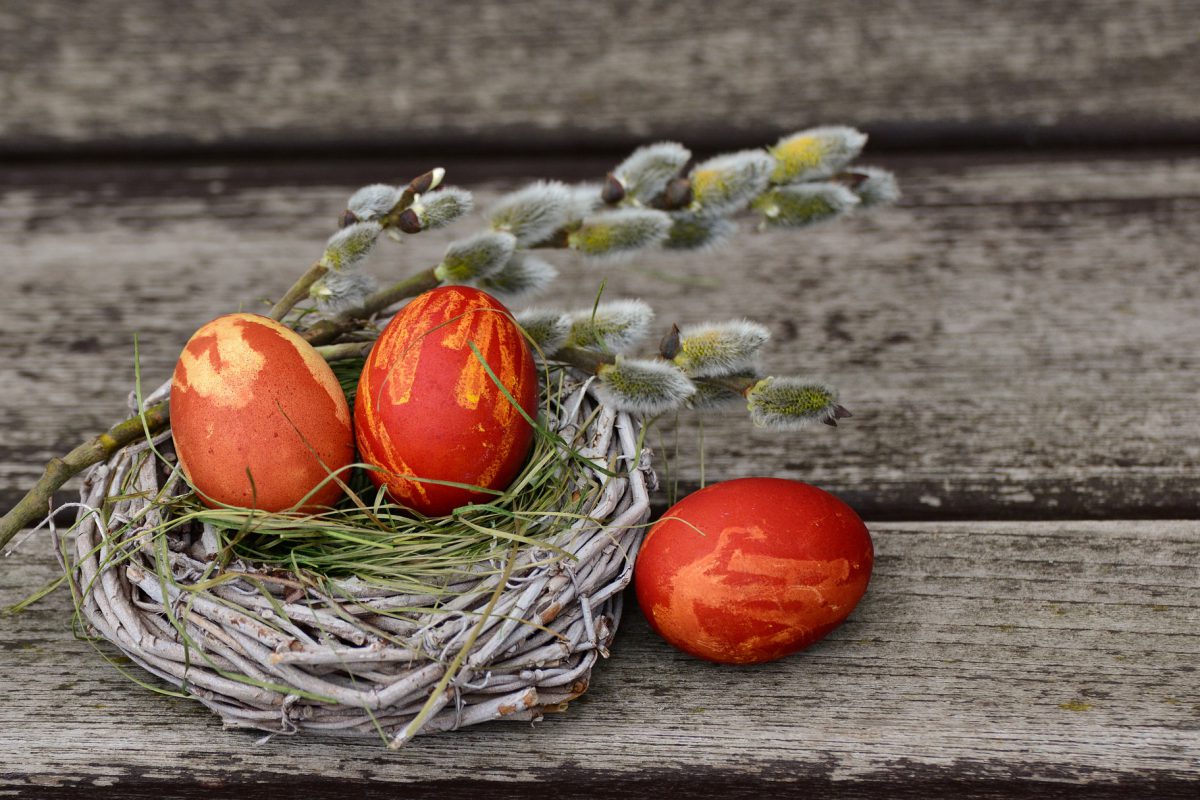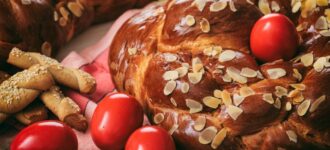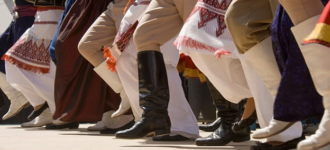
Easter in Crete is a tsunami of colors, flavors and scents and a unique celebration of death and resurrection for humans and nature alike. This is also the best time to visit Crete as the weather is warm -but not too hot- and Cretan nature is at its best!
The Holy Week is a great opportunity to combine the experience of urban and rural life in Crete. Enjoy the first warm days of the year in the lovely Cretan countryside and get to know the Cretan flora, as all flowers and plants are blooming!
In the cities, fish taverns are full of people who enjoy tsikoudia, ouzo or wine with seafood appetizers and the famous taramosalata. Traditionally, families dye eggs red on Maundy Thursday and already start the preparations for the Easter table. The scent of freshly baked tsoureki and kaltsounia (aka lichnarakia) coming from the houses and traditional bakeries will dazzle your nose!
Good Friday is a great opportunity to visit the beautiful Monasteries of the island to listen to beautiful hymns and experience the Epitaph. Ceremonies start early in the morning, with women adorning the epitaph with flowers, preparing it for the evening procession. The smell of flowers, together with the scent of burning incense and the beautiful hymns chanted in the church create a transcending experience that touches everybody. The epitaph ceremony reaches its climax with the candlelit Epitaph procession, where priests, choirs, and the faithful chant together lamentation hymns of Orthodoxy. The epitaph of St. Minas in Heraklion is particularly impressive, as it is accompanied by the Municipal Orchestra, the army, and a human river.
On Holy Saturday, lamentation ceremonies continue in churches and monasteries, but in Cretan houses families feverishly prepare for an exquisite and quite complicated Easter dish, Mageiritsa. An acquired taste for most people, Mageiritsa is a soup made of lamb offal, intestines and avgolemono (lemon and olive oil sauce). The recipe might sound repulsive, but unless you are a vegetarian or vegan, you should definitely give it a try if you have the chance, as it can be very delicious! Mageiritsa is served after the midnight, when the “announcement” of the resurrection of Christ is spread from the church, bells ring happily and believers share the holy light.
Easter Sunday is a gastronomically rich holiday, as families gather, usually in their village houses, and enjoy a full day in the countryside eating, playing music and dancing. The most characteristic delicacy of the day is spit-roasted lamb, but in Crete, they also make lamb antikristo, a traditional cooking method where the meat is cut into large pieces, passed through huge wooden skewers and slowly cooked around a big fire.
Easter is the most important religious holiday in Greece, characterized by many fascinating customs and traditions that reflect bygone times, and offers a different touristic experience, closer to Cretan culture. One thing is for sure: the experience of Cretan Easter will enchant you!





